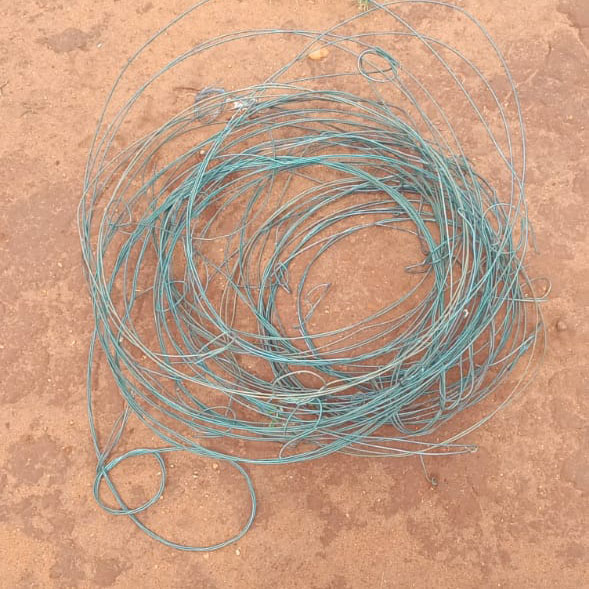
There are few ways through a snare line. Poachers will string up dozens of these simple killing devices across commonly-used wildlife corridors, and like fishing nets spanning a river, one of them will usually catch something.
It’s as cheap and easy a way to poach wild animals for bushmeat, as it is ruthless and indiscriminate. If your head fits through the hole, you’re in trouble, as this camel recently discovered.
 Snares are usually set to catch victims by the neck as they walk through. Wild animals will struggle to break free, pulling the snare tighter and tighter and often strangling themselves in the process. This camel, obviously used to being tied up, adopted a far calmer approach to the problem and simply lay down to wait for a human.
Snares are usually set to catch victims by the neck as they walk through. Wild animals will struggle to break free, pulling the snare tighter and tighter and often strangling themselves in the process. This camel, obviously used to being tied up, adopted a far calmer approach to the problem and simply lay down to wait for a human.
Luckily some came along, in the form of rangers conducting a de-snaring sweep of the area. This was part of a bigger operation over the last couple of weeks, where Big Life rangers partnered with the Kenya Wildlife Service to patrol a large area in the far reaches of Big Life’s operating area, along the western edge of Tsavo West National Park.
Community informers had reported an increase in snares in the area, and rangers have now pulled out and destroyed 45 (and counting). We are receiving more and more of these reports, particularly on the borders of our operating area, which suggests that bushmeat poaching is on the increase.
It is as we’ve feared. The economic impacts of COVID-19 are being felt in Kenya as they are across the world, and it seems that many are turning to poaching. We hope that this COVID-19 storm will pass quickly. Until it does, our entire ranger network is on high alert.
